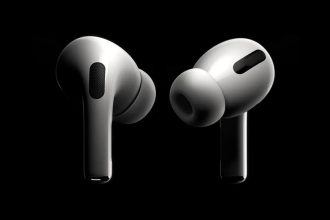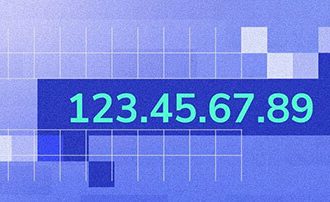In this article, we’ll take a deep dive into Google Pay, the mobile payment solution offered by Google. We’ll take a detailed look at the benefits and limitations inherent in using Google Pay, while guiding you through the essential steps for configuring and operating this service on your Android device. We’ll also look at the financial partners and merchants who have adopted Google Pay.
How does Google Pay work?
LikeApple Pay, Google Pay is a mobile payment method that lets you store your bank cards and use them to pay online or in-store. The payment service uses NFC on the smartphone or connected watch to carry out a short-distance transaction in the same way as a contactless bank card. It’s important to note that Google Pay is only a service backed by Google Wallet. So, to use the Pay function, you need the Wallet application – which has some very useful features (loyalty and transport card storage, transaction history, etc.). In addition, you need a Google account for the whole thing to work. To be able to pay, you need to add a bank card whose issuing bank is partnered with Google. Then, simply approach your device to any contactless electronic payment terminal, having taken care to authenticate yourself(facial recognition, fingerprint, security code…) according to your device. Google Pay is also available online on websites and applications offering this payment method, so all you have to do is pay by logging into your Google account.
It’s important to note that Google Pay is only a service backed by Google Wallet. So, to use the Pay function, you need the Wallet application – which has some very useful features (loyalty and transport card storage, transaction history, etc.). In addition, you need a Google account for the whole thing to work. To be able to pay, you need to add a bank card whose issuing bank is partnered with Google. Then, simply approach your device to any contactless electronic payment terminal, having taken care to authenticate yourself(facial recognition, fingerprint, security code…) according to your device. Google Pay is also available online on websites and applications offering this payment method, so all you have to do is pay by logging into your Google account.
Which devices are compatible with Google Pay?
It’s very simple: all Android smartphones with version 5.0 or higher and an NFC antenna are compatible (Samsung Galaxy, Google Pixel, Xiaomi…). With the exception of the latest Huawei devices, which do not feature GMS (Google Mobiles Services) and are therefore incompatible with Google Pay, there are no brand or model restrictions. Note that although Samsung uses its own Samsung Pay solution on its Galaxy devices, it is perfectly possible to use Google Wallet by downloading it from the Play Store. Smartphones are not the only devices compatible with Google Pay; the payment solution can also be used with the following devices:
- Connected watches: all watches equipped with Wear OS 2.0 or higher and NFC (Samsung Galaxy Watch 4 and higher, Google Pixel Watch, TicWatch Pro 3 and higher…). The only exception is the Fitbit Sense 2 and Versa 4 watches, which are also compatible with Google Pay even though they don’t run Wear OS.
- Android tablets: all Android tablets support online and in-app payments with Google Pay, but not in-store contactless payments.
- Browsers: all browsers on all platforms are compatible with Google Pay for online payments, as long as the merchant site accepts the payment method. So it’s perfectly possible to use Google Pay on Apple devices and on browsers other than Chrome.
On Android, the application is generally installed natively on all devices. If this is not the case (particularly with Samsung), simply download Wallet from the Play Store.
Which banks are compatible with Google Pay in France?
At the time of writing, no traditional bank has integrated Google Pay into its offering. Only online banks are compatible with Google’s solution, including :
- Boon (Wirecard)
- Boursorama Banque
- bunq
- Fortuneo Banque
- Lydia
- N26
- Orange Bank
- PCS
- PixPay
- Revolut
- Vybe
- Zelf
In addition to banks, Google Pay also supports institutions for specific payments:
- Manager One (Pro)
- Swile
- Ticket Restaurant Edenred
- UpDéjeuner
As the list of banks and payment partners is constantly evolving, Google regularly updates a dedicated page, which can be consulted freely.
The benefits of Google Pay
- Simplicity: Google Pay enables fast in-store transactions thanks to NFC, eliminating the need to take out a physical card. When shopping online, simply select Google Pay for payment without having to manually enter card details.
- Security: Biometric authentication and data encryption guarantee the confidentiality of sensitive data. What’s more, Google never shares your banking information with merchants.
- Card centralization: Thanks to Wallet, you can store several bank cards, as well as certain loyalty and transport cards, in a single application.
- Payment amounts: In France, contactless bankcard transactions are limited to 50 euros, but with Google Pay there’s no limit. The only limit is that of your bank card.
- Compatibility : Google Pay works on the vast majority of Android devices, regardless of make or model.
Disadvantages of Google Pay
- Few participating banks: No traditional banks and a limited number of online banks are compatible with Google Pay. This makes it a less universal solution than Samsung Pay on Samsung devices or Apple Pay on iOS.
- Confidentiality : Payment information and transactions systematically pass through Google’s servers during validation, raising questions about privacy.
Setting up and using Google Pay
Here’s how to set up and use Google Pay:
- Download and install the Google Wallet application on your Android device.
- Open the Google Pay application and sign in to your Google account.
- Follow the on-screen instructions to add a payment card to your Google Pay wallet. You can do this manually or by scanning the bank card.
- Authenticate yourself on your banking application or by SMS if necessary.
- Once you’ve added a payment card, you can start paying with Google Pay.
To pay with Google Pay in-store, follow these steps:
- Open the Google Wallet app on smartphone or connected watch.
- Press the “Pay” button.
- Authenticate yourself biometrically (fingerprint, code, facial recognition…)
- Hold your phone or smartwatch close to the store’s NFC card reader.
- Wait for the payment to be processed.
To pay online, follow these steps :
- During your checkout process, look for the “Google Pay” or “Pay with Google” button.
- Press the “Google Pay” option.
- Log in to your Google account if you are not already logged in.
- Select the payment card you wish to use and press the “Pay” button.






